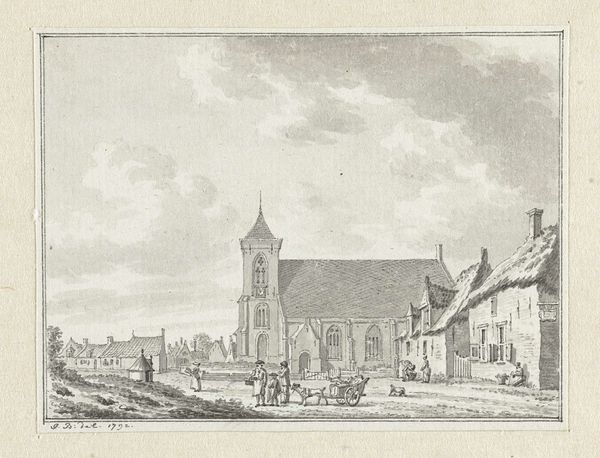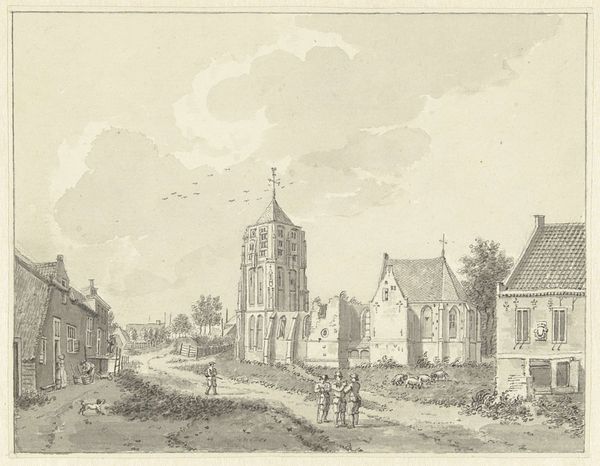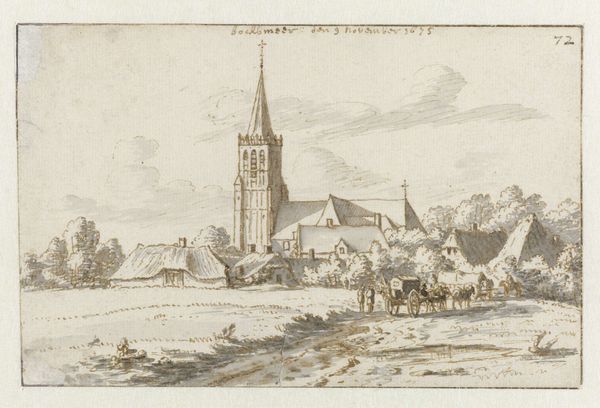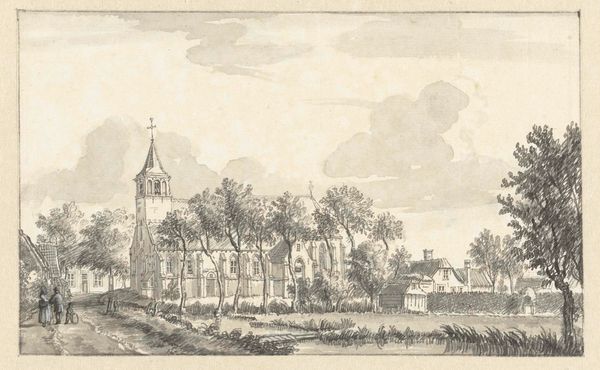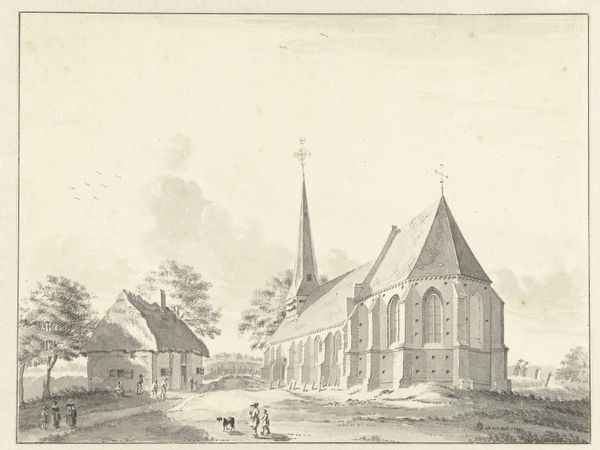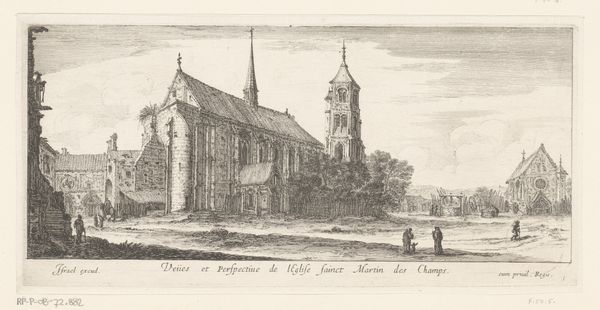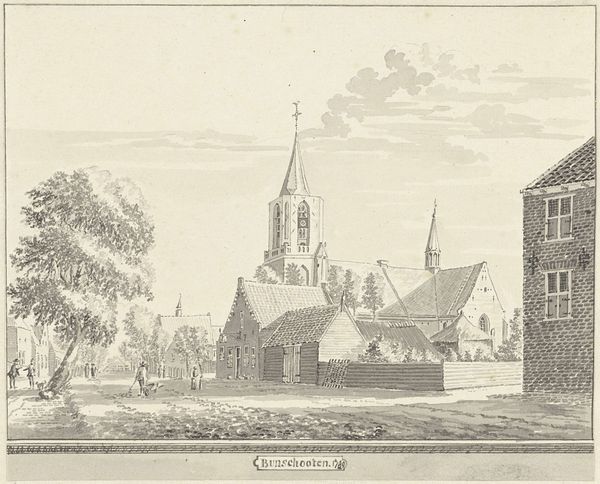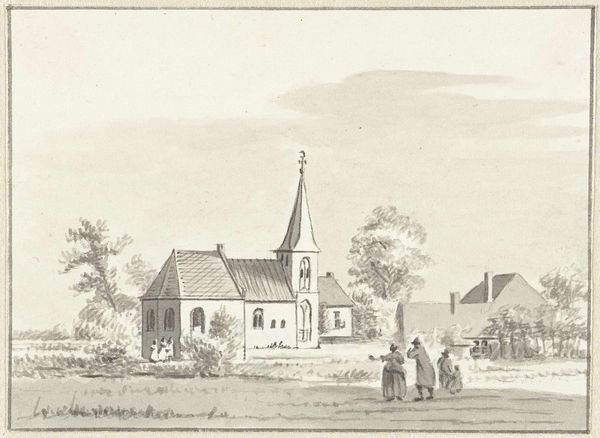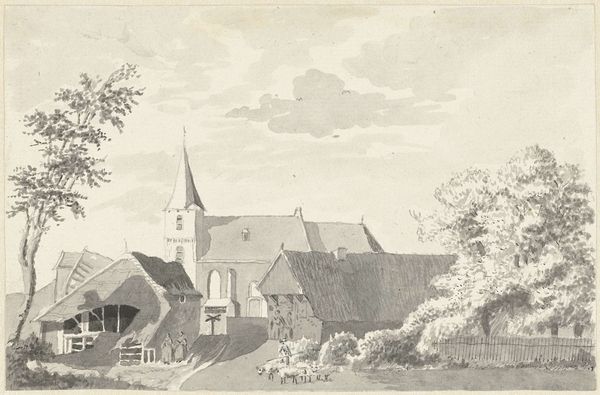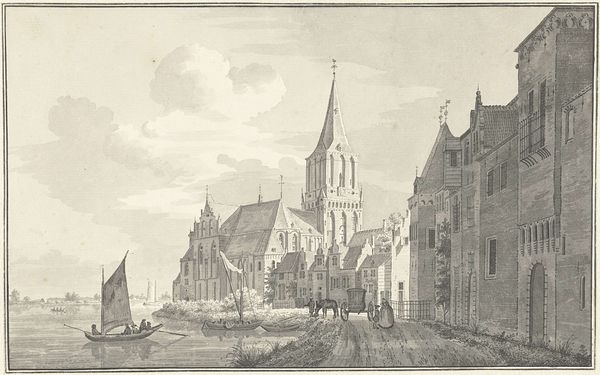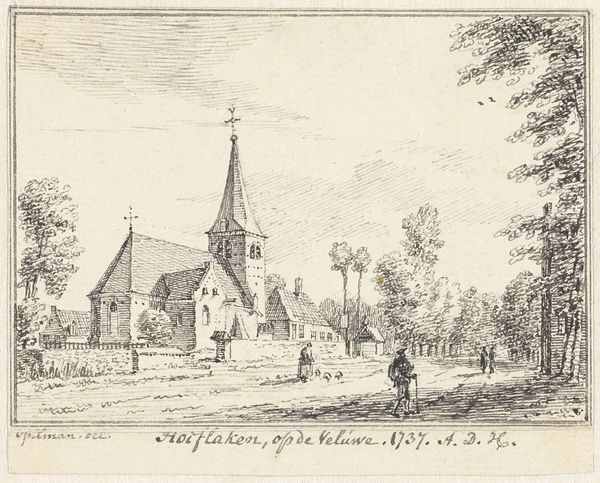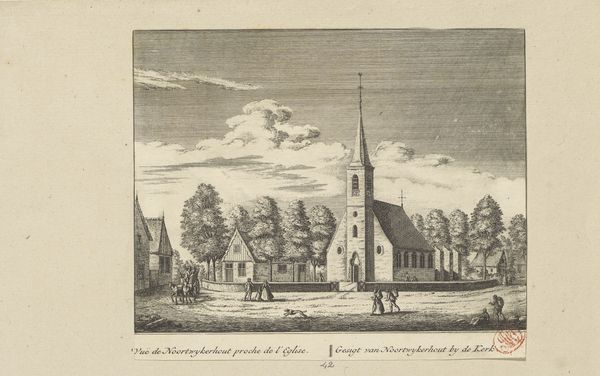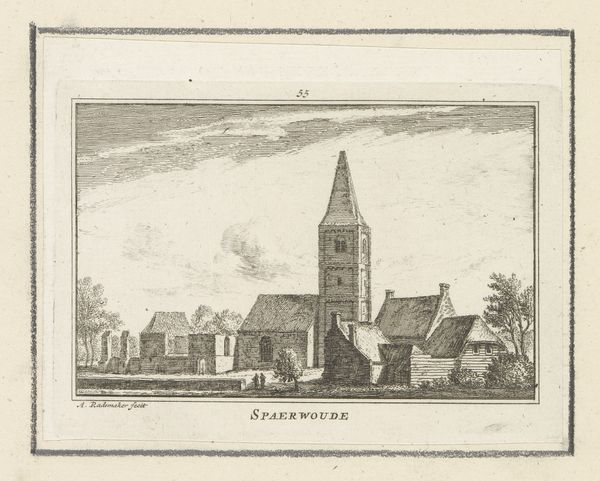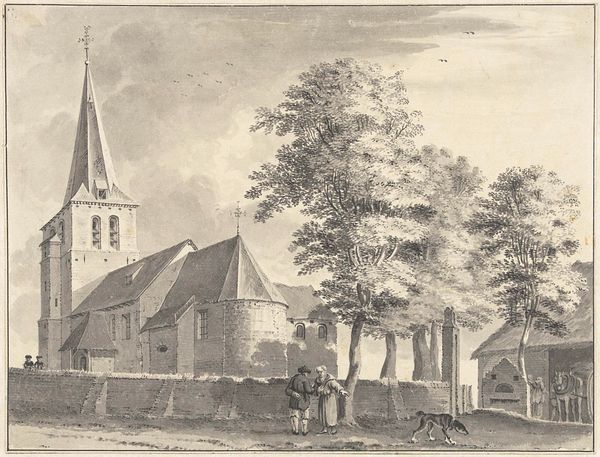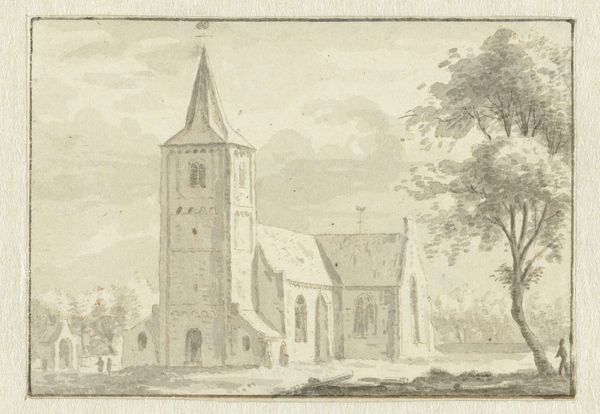
print, engraving
#
dutch-golden-age
# print
#
landscape
#
cityscape
#
engraving
Dimensions: height 80 mm, width 115 mm
Copyright: Rijks Museum: Open Domain
Curator: This is Abraham Rademaker's "View of Noordwijkerhout," dating from around 1727 to 1733, though the scene it depicts dates to 1631, evidenced by the engraving in the bottom right of the work. It's a fascinating example of Dutch Golden Age printmaking currently housed at the Rijksmuseum. Editor: My first impression is one of peaceful melancholy. The cool tones and delicate lines evoke a sense of quiet contemplation, don't you think? There's a palpable stillness in the air. Curator: Absolutely. Rademaker masterfully captures the intersection of societal change and the persistence of the everyday within Dutch society. This period sees shifts in religious and political landscapes, the crumbling abbey set in the image juxtaposing with what looks like common daily life in this period. Editor: Yes, and let's look closer at those crumbling abbey ruins versus the solid, geometric form of the church beside it. We see the sharp lines of its structure compared with the broken curves of the ruins. The artist clearly manipulates visual language to suggest narrative contrasts. Curator: Indeed. One could interpret the contrast between the ruined abbey and the active church as symbolizing the transition from Catholic to Protestant dominance, which shaped Dutch identity during this era. These architectural shifts also impacted class and power structures, affecting everyday people. Editor: Considering the artist's intentionality is insightful. The placement of the figures, their scale and diminutive nature within the wide landscape -- is there a dialogue between the individuals and the skyline? Curator: I think so. Placing human subjects against grand structures reminds us of power dynamics within religious institutions. Did these architectures welcome all community members, and at what costs? It asks questions around representation and who history often forgets. Editor: Beautifully stated. Examining its composition, attention is brought not just to sociopolitical histories but to its very design elements. That balance, the narrative interplay of shapes and lines – they all reinforce the thematic intention. Curator: Rademaker's print gives us so much to contemplate: legacies, social structures, architectural stories, and, indeed, visual pleasure. Editor: A powerful intersection of artistic skill and cultural insight, offering, even centuries later, layers upon layers for us to unpack.
Comments
No comments
Be the first to comment and join the conversation on the ultimate creative platform.
